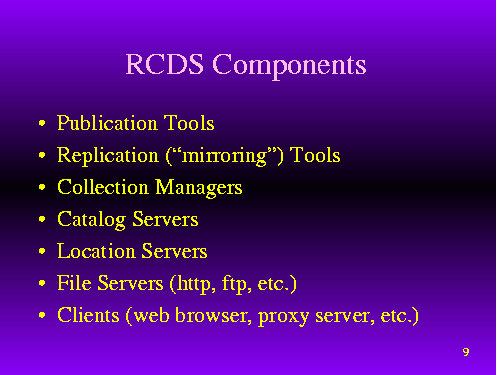
Click slide for next, or goto previous, first, last slides or back to thumbnail layout.
This slide lists the major components of RCDS.
Publication tools are used to "check things in" to the system, that is, an author uses a publication tool to inform RCDS that he has a resource to publish, fill out and cryptographically sign its description, and copy the resource and its description to an RCDS file server.
Replication tools create replicas of RCDS-accessible resources, and inform the location servers when replicas become available.
Catalog servers allow clients and other interested parties, given a resource name like a URL, to obtain a description of that resource.
Location servers allow clients to find where copies of a resource are located.
File servers are ordinary http, ftp, gopher, etc., servers. New protocols can also be supported.
An RCDS client is any consumer of RCDS resources or descriptions. Most people think of a web browser or proxy server, but more specialized clients are also possible.
Not listed here is SONAR, which allows a client to distinguish nearby locations of a resources from those at a greater distance.
Click slide for next, or goto previous, or back to thumbnail layout.